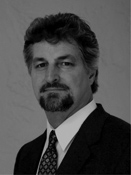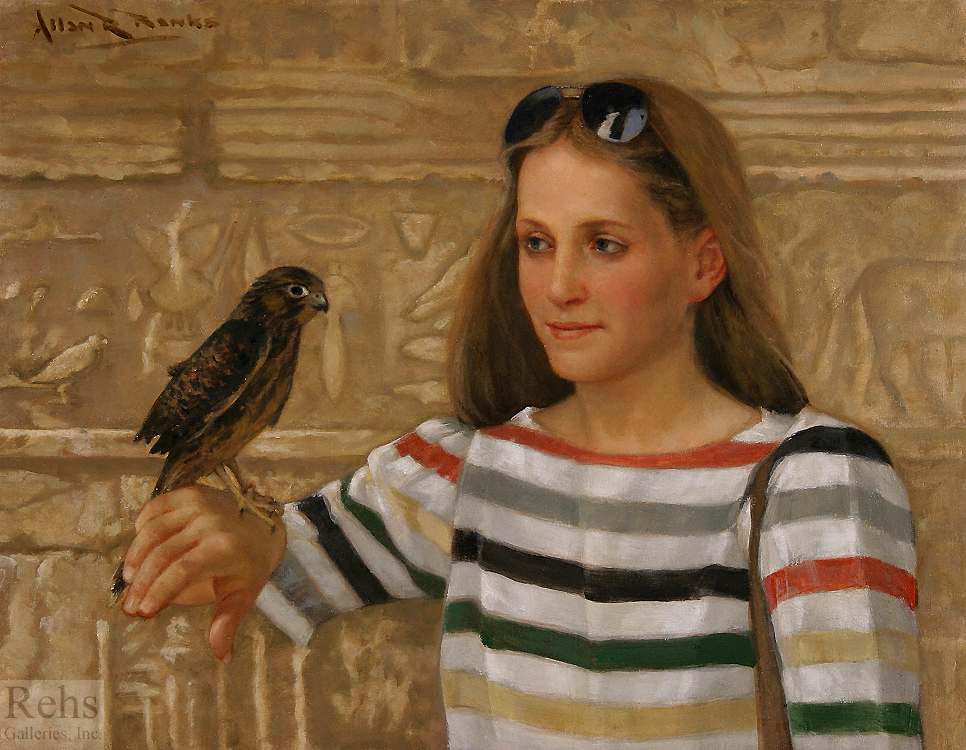Allan Banks
(Born 1948)
Portrait of Beth
Oil on canvas
14 x 18 inches
Signed
BIOGRAPHY - Allan Banks (Born 1948)

Growing up in suburban Detroit, Allan Banks began his formal art education at the Society of Arts and Crafts art school affiliated with Wayne State University in 1966. Banks’ formative influences during these years included the art of William Bouguereau (1825-1905), and R. H. Ives Gammell’s 1946 book, Twilight of Painting; the result was a decision to focus his own work on representational art as exemplified by the graduates of the Ecole des Beaux-Arts in Paris. With the goal of pursuing a more classical form of training, Banks enrolled in the Atelier Lack in Minneapolis, Minnesota. Founded by Richard Lack (1928-2009) in 1969, the Atelier Lack was uniquely suited to Banks’ interests. Lack himself was a student of R.H. Ives Gammell (1893-1981) whose lifelong commitment to traditional educational methods was both singular and exemplary in the mid-twentieth century. Lack’s determination to continue teaching this method offered exactly the kind of training that Banks was seeking.
The first half of the 1970s were productive years for Banks. Living in Minneapolis with his wife and child, he focused intensely on mastering classical drawing and painting techniques; and was awarded the Elizabeth T. Greenshields Memorial Fellowship in both 1972 and 1973. After completing his studies at the Atelier Lack in 1974, Banks moved to Sandusky, Ohio where he established a studio and received both The John F. and Anna Lee Stacey Scholarship Fund award (1974) and an Ohio Arts Council award (1975). He also began accepting students who were interested in learning classical realism. As Banks remarks, “anti-modernists were outsiders in most art schools” which meant that his studio was one of a handful of places where students could learn traditional techniques and concepts.
In addition to teaching, Banks established a reputation as a portrait painter during these years. His first major commission came from the dean of Bowling Green University, and with a little business advice from a kindly banker, he began a promising career. Banks’ plein-air paintings of gardens were especially successful in finding a receptive audience at several Ohio galleries. With a growing number of these exhibitions to his credit, he was determined to expand his audience into the galleries of New York City. His friend and fellow-painter, Charles Pfahl, provided that opportunity with an invitation to visit his own New York studio in 1976.
While exploring the New York art world of the mid-1970s, Banks decided that he would introduce himself to R.H. Ives Gammell, then eighty-one years old, in Boston. Despite his age, Gammell continued to teach selectively, and Banks was “extremely honored” when the master painter invited him to spend the summer working with him in his Williamstown, Massachusetts studio. Banks did two portraits that summer, and fine-tuned his understanding of the craft of painting. He notes that he also learned much about the social etiquette of Gammell’s world of proper Bostonians during those months.
By 1978, Banks had moved from Sandusky to Newburgh, New York, sixty miles north of New York City on the Hudson River. The proximity to metropolitan New York gave him convenient access to galleries as well as a world of friends and collectors in the art world. The New York sojourn lasted until 1982 when Banks returned to Ohio, while simultaneously maintaining his connections to the art world of New York City. By this time, his career was well established, and he was developing a reputation as a traditional representational painter.
A trip to London in 1983 further reinforced his appreciation of naturalist painting through the study of nineteenth century British artists such as Sir George Clausen, RA (1852-1944) and the plein-air painters of the Newlyn School. Equally important was the work of the French naturalist, Jules Bastien-Lepage (1848-84), whose works had been exhibited at both the Royal Academy in London and the influential Grosvenor Gallery in the 1870s and 1880s. On returning to the US, Banks resolved to move to a climate that was compatible with year-round plein-air painting. By 1985, he was in Florida.
The following decade brought a variety of opportunities, including abundant traveling. In 1991, Banks and his friend Carl Samson journeyed to Claude Monet’s home in Giverny, France where they spent six weeks painting; in 1994, he spent a brief time in France and England, and in 1995, he returned again for a six-week stay. In 1996, he was invited to join a small group of American artists as part of the first cultural exchange with the Union of Russian Artists, a unique opportunity to meet and work side by side with Russian realist painters.
In 1993, Banks also opened a school for plein-air painting in Safety Harbor, Florida. He accepted a limited number of students, including Holly Hope, who would become his wife in 1997. He also served as president of the American Society of Classical Realists for seven years. As private commissions expanded, including one from filmmaker George Lucas for the limited edition book, Star Wars Art: Visions, he decided to close the school and concentrate on personal works and portraiture. Today, Banks increasingly concentrates on large thematic paintings, very much in the tradition of the naturalist artists whose work he has championed throughout his career.
Janet Whitmore, Ph.D.

